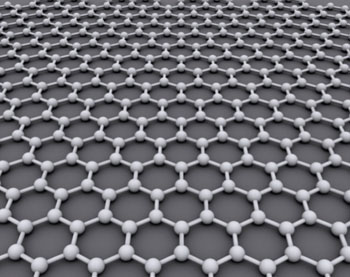Graphene Could Reshape Neurological Disease Care
By LabMedica International staff writers
Posted on 15 May 2014
Graphene, a two-dimensional (2D) crystalline allotrope of carbon, may lead to new advances in several areas of neurosurgery, according to a new topic review.Posted on 15 May 2014
Researchers at the University of Illinois College of Medicine (Peoria, USA) and Invision Health Brain and Spine Center (Williamsville, NY, USA) argue that neurosurgeons could use graphene-based metamaterials, which possess unique optical, thermal, mechanical, electronic, and quantum properties, to encourage the development of high-performance, lightweight, and malleable electronic devices, ultracapacitors, optical modulators, molecular biodevices, organic photovoltaic cells, lithium-ion microbatteries, frequency multipliers, quantum dots, and integrated circuits.

Image: Structure of graphene (Photo courtesy of Wikimedia).
According to the review, these potential breakthroughs in graphene biomedical technology over the next few decades could significantly impact several areas of neurosurgery, including neuro-oncology, neurointensive care, neuroregeneration research, peripheral nerve surgery, functional neurosurgery, and spine surgery. The review also provides an introduction to the main properties of graphene and discusses future perspectives of ongoing frontline investigations of graphene, with special emphasis on research fields that are expected to substantially impact experimental and clinical neurosurgery. The topic review was published in the May 2014 issue of Neurosurgery.
“While graphene has been shown to be biocompatible, more basic research is needed to examine the long-term biological effects of graphene implants and to answer other important clinical questions,” concluded study authors Tobias Mattei, MD, and Azeem Rehman, BSc. “Increased awareness of the ongoing frontline research on graphene may enable the neurosurgical community to properly take advantage of the technological applications such a new metamaterial may offer.”
Graphene is a monolayer atomic-scale honeycomb lattice of carbon atoms which combines the greatest mechanical strength ever measured in any material (natural or artificial) with very light weight and high elasticity. Graphene has unique optical and photothermal properties which allow it to release energy in the form of heat in response to light input; it also has very high electrical conductivity. The high surface area allows bioconjugation with common biomolecules. Andre Geim and Kostya Novoselov of the University of Manchester (United Kingdom) were awarded the Nobel Prize in Physics in 2010 for its development.
Related Links:
Invision Health Brain and Spine Center
University of Illinois College of Medicine







 Analyzer.jpg)






